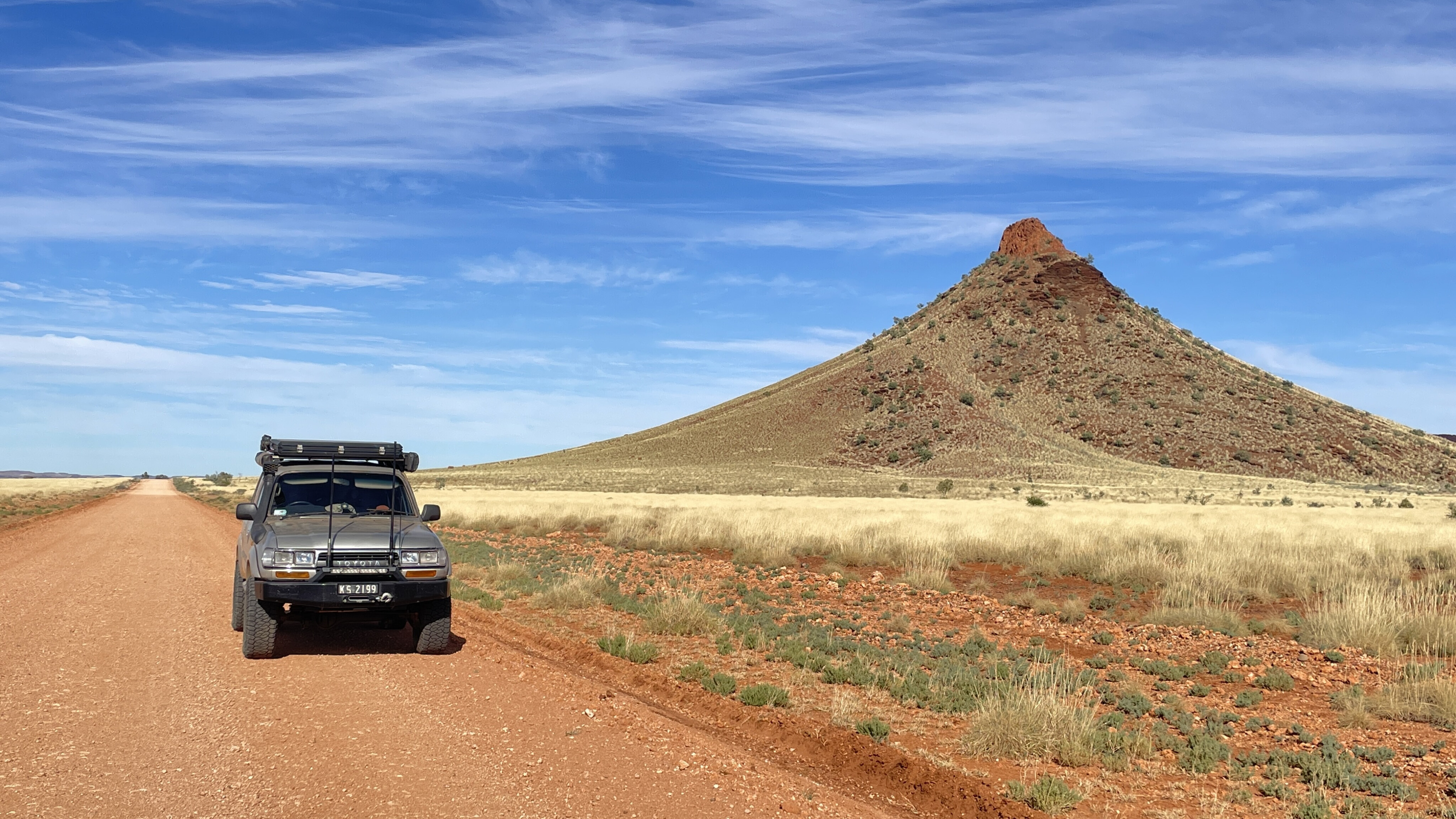
I’m not sure how I ended up at Pannawonica, in Western Australia’s mid-north, but I know I was on my way into the vast and often underrated Pilbara area.
After fuelling up I did the usual drive around town to find out what goes on there, but soon realised it was a mining town. Owned by Rio Tinto, it is regarded as a ‘closed’ town that services the local mines, but it does sell fuel to the passing public. Several large iron ore mines operate 50km out of town and the majority of the ore is transported by rail to Cape Lambert, near Wickham some 200km away.
Permission was given to drill in 1948 and 20 years later the world’s biggest ore contract was signed in Japan, and for the next 76 years the ore continues to be processed from the area. Even though the town has had a refurb, it still has a 70s theme.
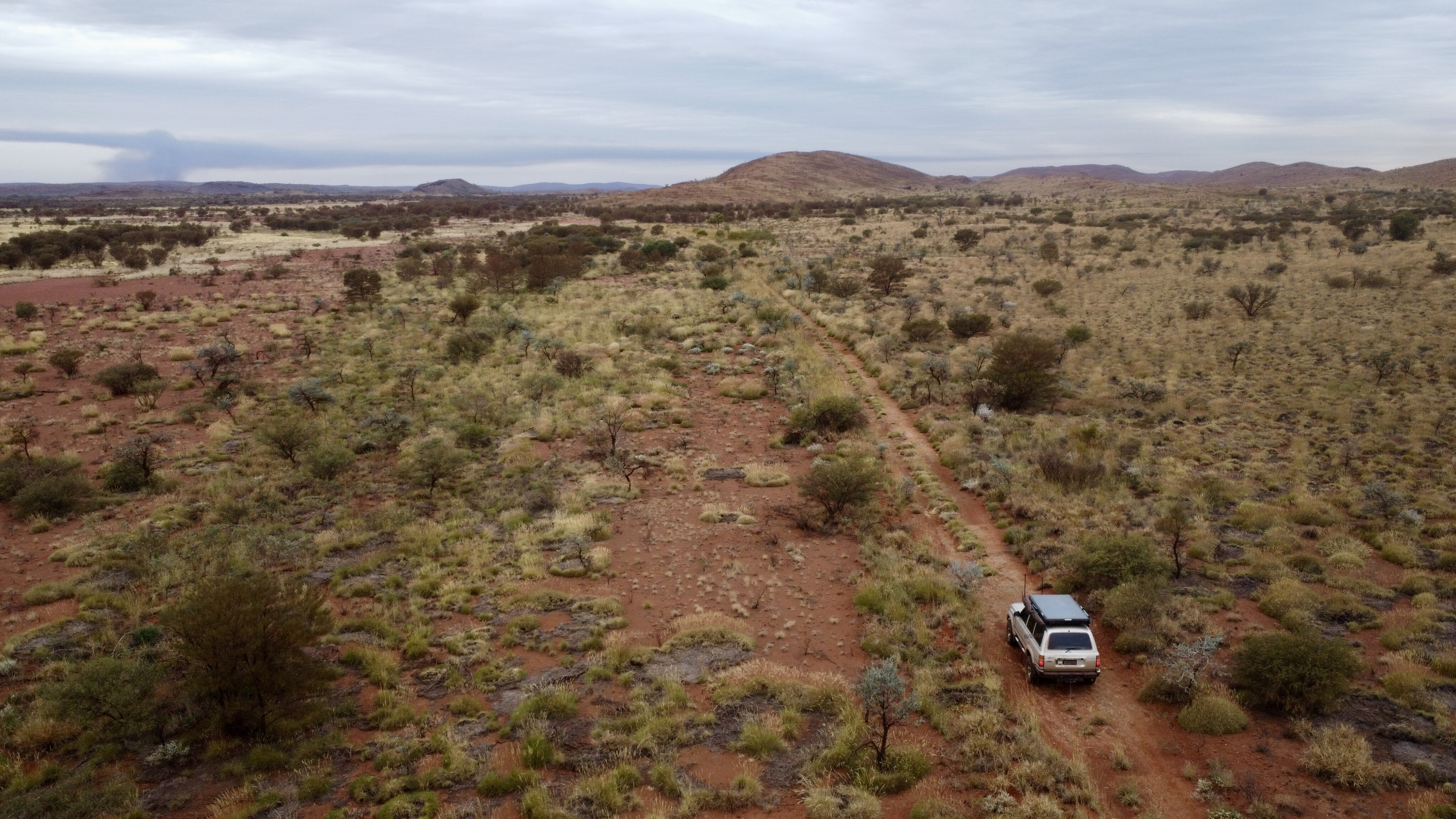
Pannawonica Hill is a popular spot for locals and it’s claimed that the town’s name came from here. The word ‘Pannawonica’ means the hill that came from the sea. Local legend says that two tribes were arguing for the rights to the hill when it was beside the ocean, and when the sea spirit saw this it dragged the hill to where it is today. The path that it was dragged along became the Robe River.
Heading near due east, my next stop was Millstream NP about 130km away through the Pilbara region, where the roads were in pretty good condition due to the mines in the area.
About halfway to Millstream I encountered one of the massive ore trains heading to Dampier on the coast. If you are lucky like me, you will get to see the entire length of the train as it passes; it has three massive engines (two up front and one in the middle) and hauls around 240 carts of iron ore, weighing in at an impressive 30,000 tonnes and measuring almost 3km long.
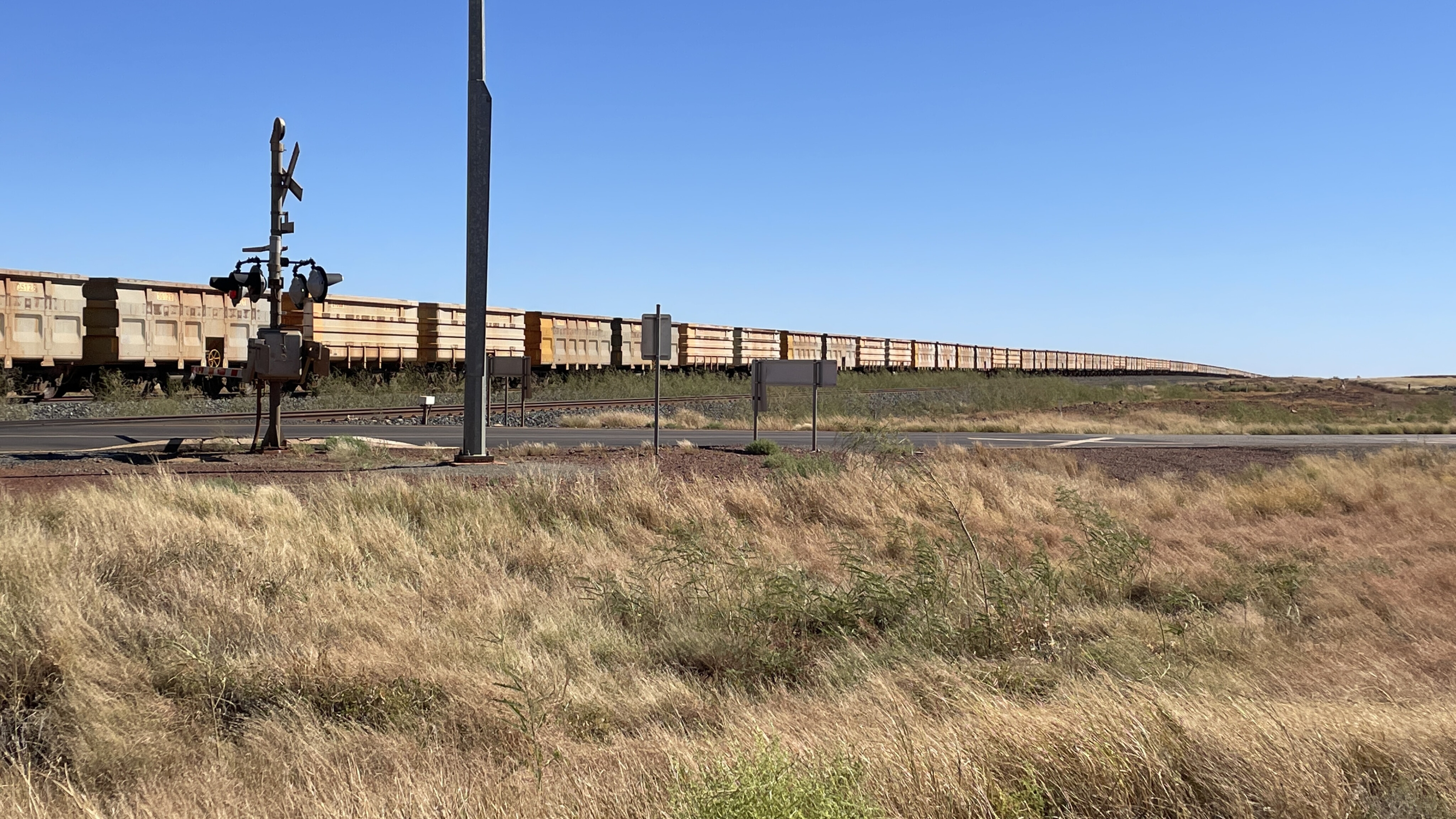
Each train has a turnaround time of 28 hours… and they run 24 hours a day. Trying to count all the rail carts will have your eyes spinning.
I had another 60km to go before I reached the entry to Millstream NP, where I had booked a site at Stargazers Campground. These are pretty basic sites but provide a good base to explore this area of the park. It’s only a short stroll to Millstream House where you can learn about the Ngarluma and Yindjibarndi people’s indigenous history.
Millstream Station was a pastoral lease set up in the 1800s, but the current house wasn’t built until 1901. Out the back are old bore drilling rigs and other outdoor tools. For walkers, there’s the wetland walk and the longer Warrungunha Trail out through grasslands to a clifftop lookout.
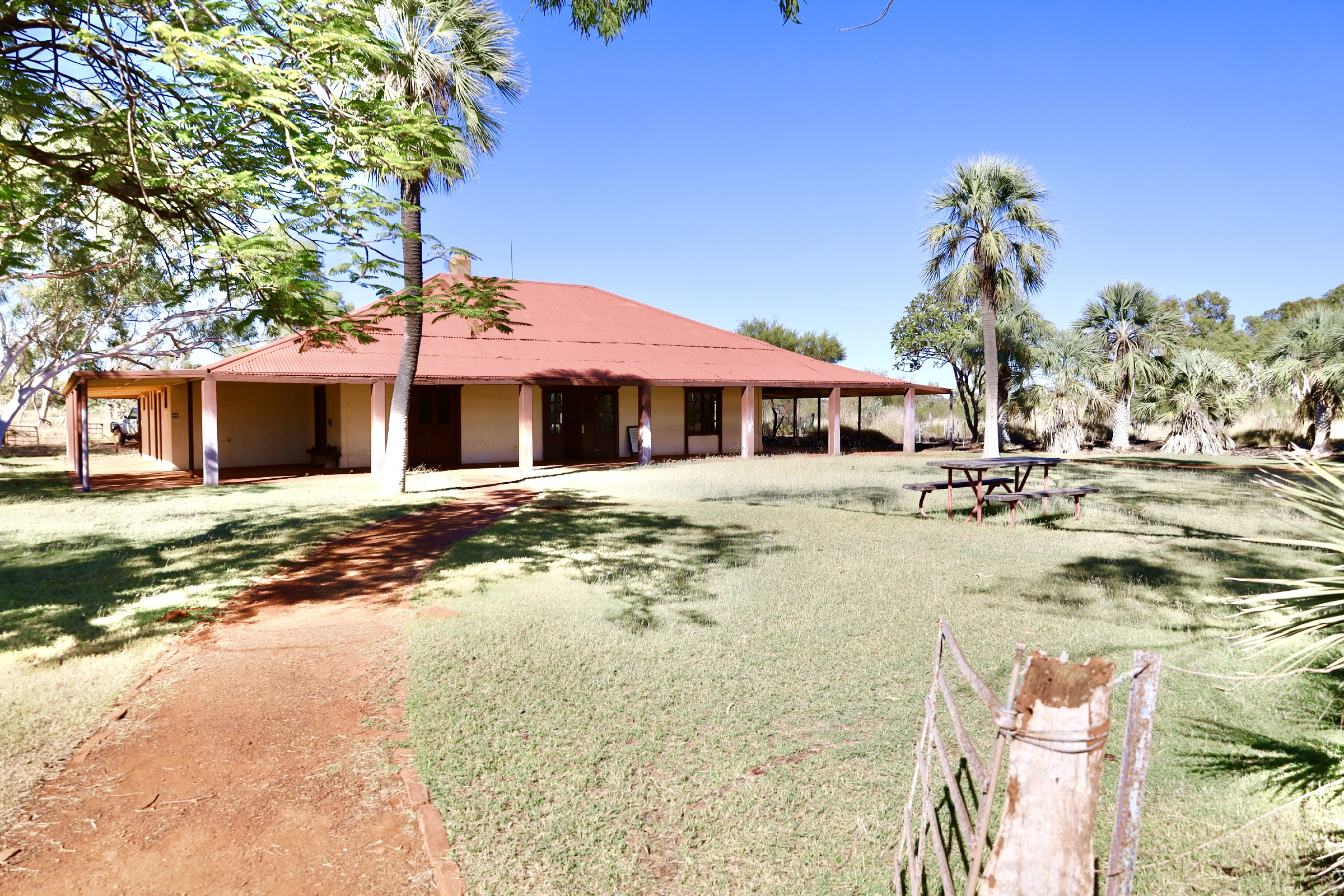
Not far from Stargazers Camp is Deep Reach Pool, which is a long waterhole where you can swim, kayak and relax. It is also home to the Warlu serpent of Yindjibarndi people. With this being a permanent water source, it’s the perfect place to spot birds, kangaroos, Pilbara dragons, goannas and snakes.
Leaving Millstream out to the Roebourne-Wittenoom Road, I headed to what I was told was a very special place called Python Pool. Here, during the wet season, water tumbles from the rocks above, which has left a near-permanent waterhole over millions of years. It’s a great place to spend some time out of the blazing heat.
For history buffs and hikers, the nearby Cameleers Trail that was used by camel and bullock teams heads across to Mt Herbert and McKenzie Spring. The historical 8km return trail features some of the first camel-emblazoned markers.
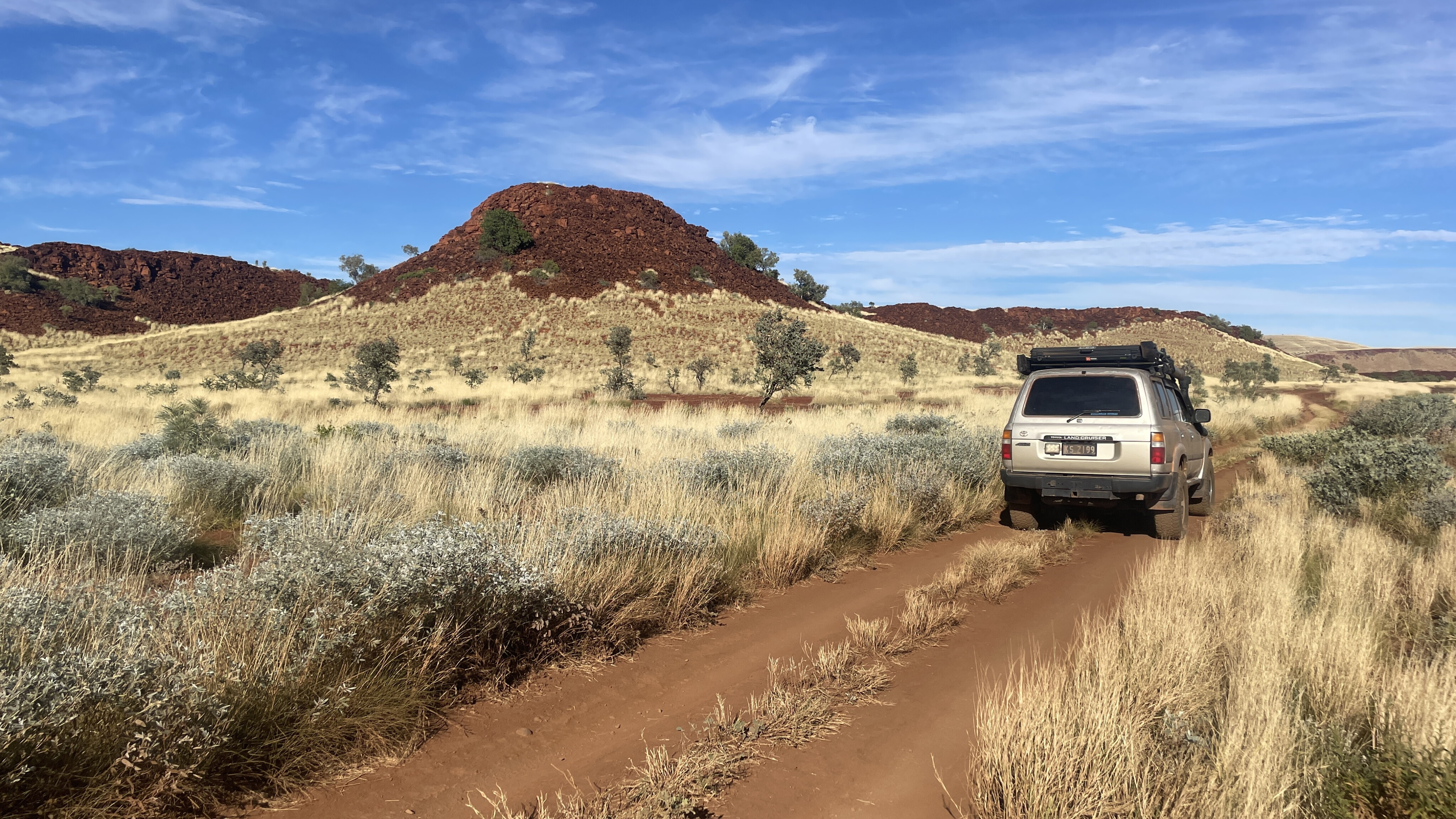
One of my goals was to head out to the remote George River campground and explore the isolated outer reaches of Millstream. The turn-off to the camp is signposted as a simple remote warning sign, and from here it took nearly two hours to reach the campground just 10km away. The track becomes rough as it heads into the remote outer reaches, passing old waterholes and through tree-lined dry creek beds.
Heading across the last spinifex plain, I was doubting the magic that I had heard about George River, but when the track swung into a gorge with a freshwater pool below towering cliffs, I struggled to swallow the lump in my throat that developed when I first saw this beautiful place.
With no one else around I picked the prime spot and just stood there, looking up at the red ochre cliffs in amazement, and as the afternoon sun sunk below the plateau the whole sky turned a mix of soft pinks and a hazy purples.
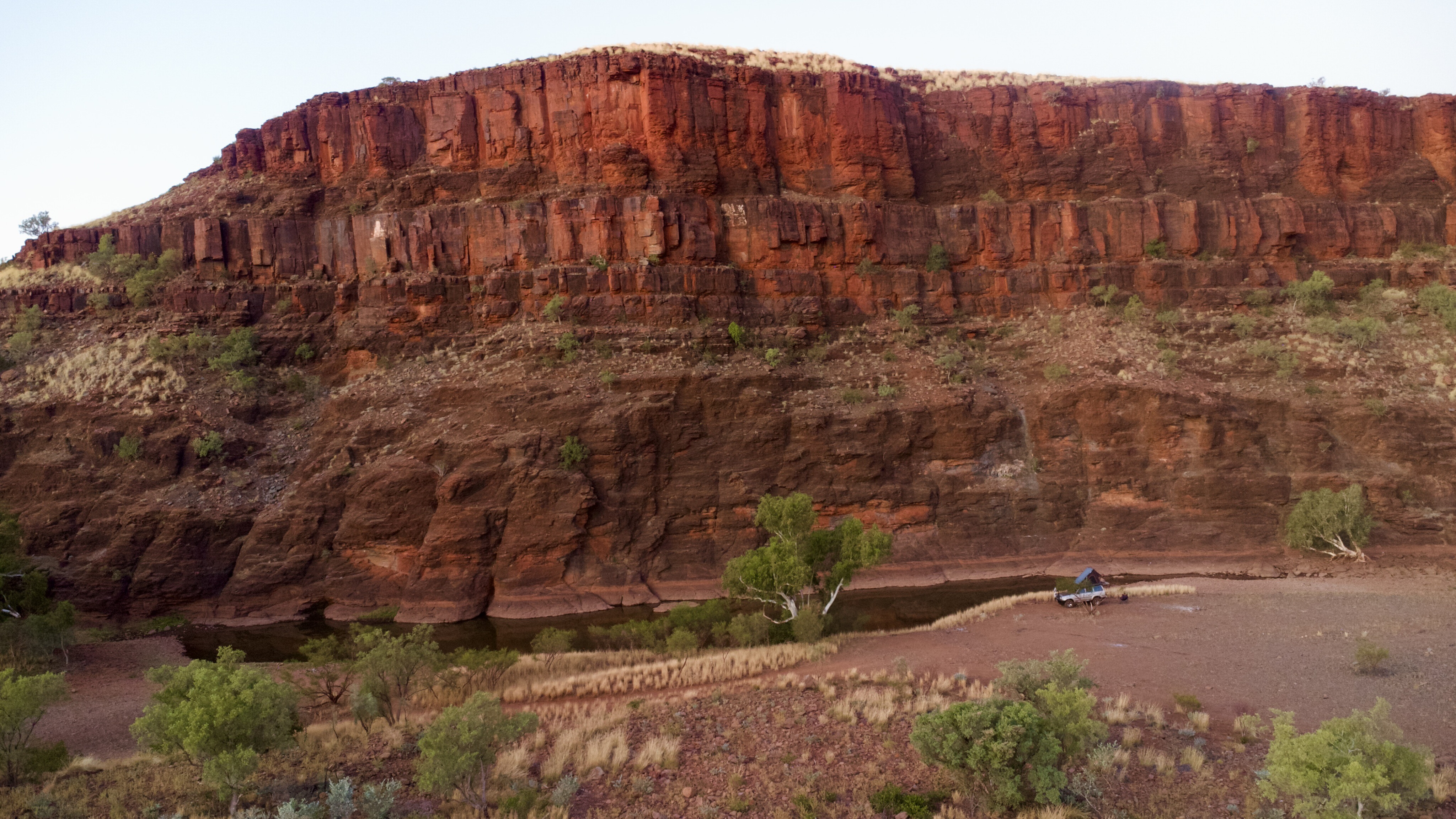
The morning light was just as spectacular as the Pilbara landscape lit up in the golden hour. George River really is a special place – calming yet it feels as though there’s a presence there.
I visited Millstream NP in winter at which time the days were warm and nights were cool. During summer this area would be unbearable, and the pools would be overgrown with algae and stagnant water. Unlike the main camping areas, George River camp is free, but can only be accessed with a 4x4. There’s no phone service, no bins, nothing here… just peace with the Pilbara and being on Country.
My time at Millstream had come to an end and I made my way back out to the Roebourne-Wittenoom Road for the solid two-hour trip back to Karratha.
Millstream is a small pocket tucked in the massive Pilbara region, but it provided me with a huge surprise with its history, cultural heritage and its absolutely stunning landscape.
Fast facts
Where is it
Millstream NP is an hour east of Karratha in the beautiful yet vast Pilbara region of WA.
What to see
Millstream NP is like an oasis in the desert, a go-to area for those exploring the Pilbara with intriguing history, waterholes, walking trails and remote camping. Millstream House has an array of literature, Aboriginal artifacts, pastoral relics and more.
How, when and where
A 4x4 vehicle is needed to explore the whole of Millstream NP. While there are no extreme off-road sections, the roads and tracks surrounding the park are not sealed. Summertime temperatures are pretty much unbearable so the best time to travel is between May and August. Trails to places like the George River remote camping area are not maintained and change each year after the wet season. Other roads around the park are used by mining companies and are generally in good condition.
For more information see exploreparks.dbca.wa.gov.au/park/millstream-chichester-national-park

COMMENTS